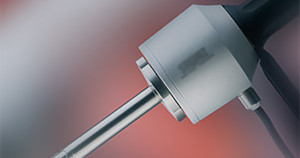The laproscopic power morcellator is just the latest in a long line of medical devices that have wound up doing far more harm than good – and that were given rapid and ill-advised approval by the US Food and Drug Administration (FDA). That same federal agency finally issued a warning in late November of 2014 – but only after thousands of women died unnecessarily from what was supposed to be a minor procedure. No actual warning has been issued, however, and many morcellators are still in use. Last week, twelve members of Congress from both parties signed a letter to the Government Accountability Office (GAO) demanding an investigation.
Morcellators, which have been in use for almost a quarter of a century, were designed to simplify hysterectomies by tearing uterine tissues into small bits in order to remove them with a laparoscope (this is sometimes known as “keyhole surgery”). It was touted as a minimally invasive procedure that would reduce hysterectomy recovery time from five days to two. In the process, the device shreds up pre-cancerous cells that are hidden within benign fibroid tissues. This can wind up spreading the cells throughout the body.
As evidence of the dangers became increasingly apparent, physicians began speaking out, and the legal industry began filing lawsuits. Johnson & Johnson, a major manufacturer of morcellators, stopped production and began pulling the devices off the market. Hospitals have curtailed the use of morcellators, and the health insurance industry is calling for greater restrictions on their use. The FDA itself estimated that as many as 1 in 350 women may have pre-cancerous cells concealed inside fibroid tissues. However, it was only after members of Congress began applying pressure that the FDA finally issued an “advisory,” calling for a “black box warning.”
Now, after months of unanswered questions, lawmakers are going over the FDA’s head.
A GAO investigation is certain to shed new light on the FDA’s questionable “510(k) Pre-Approval” process, by which many morcellators from various medical device manufacturers have been approved for use on patients. This “streamlined” process was intended to encourage innovation by making it easier and faster for the health care products industry to bring new medications and devices to market. It will also bring scrutiny to FDA claims that the hidden cancer risks were extremely low, in contradiction to studies going back several years indicating serious concerns.
One thing is almost certain: money was a factor – and not only for medical device manufacturers. Gynecologists also claimed the risks were low – possibly because reduction of surgery time and patient recovery periods saves hospitals on expenditures. It’s another aspect of a profit-driven system in which patient well-being takes a back seat to the corporate bottom line.
Although the GAO has received the request, it may take weeks, or even months, before any action is taken. The review process takes into consideration legal issues, the inspector general’s current workload and whether or not additional information may be required. Attorney Brandon Bogle, who is handling morcellator litigation for the Levin Papantonio law firm, says: “it’s absolutely beyond belief that a company would market and continue to recommend the use of a product that is unreasonably upstaging uterine cancer. This is how depraved corporate America has become.”

